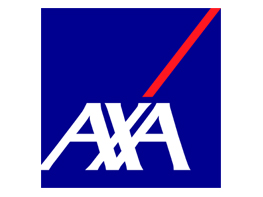74% of Workers’ Comp Professionals Are Urgently Looking to Digitize

If workers’ comp professionals weren’t already hopping on the tech-train, they certainly are now as much of the workforce transitioned to telecommuting when COVID-19 collided with our realities back in March.
Digitization has been well on its way for decades, but the suddenly urgent need for remote work changed what it means to utilize technology. This change as also resulted in increased risk, as noted in a session during the 2020 CLM Workers’ Compensation and Retail, Restaurant & Hospitality Conference.
A July 23 survey of 400 American workers’ compensation professionals, conducted by Lightico and Sapiens, highlighted the challenges and burdens of an amplified technology surge.
According to the report, technology is most easily and efficiently leveraged by companies with 500 to 1000 insureds. Forty-two percent of professionals within companies of that size said their organization is leveraging technology to its maximum ability. Forty-four percent of companies of the same size said that their processes have already been completely automated.
Quick Improvements in New Environments
In the survey, 87% of respondents claim that they are currently leveraging data to improve underwriting and product development to drive revenues and profitability.
To highlight any losses that may have come with the change to telecommuting, 65% of respondents said their organizations are capturing metrics on Stay-at-Work versus Return-to-Work procedures to measure lost time and productivity.
However, data analytics can sometimes miss the big picture without a human touch.
This can be offset by human communication with customers and sufficient investments in communication technology, all of which can help prepare for a future with COVID-19 as an existing risk.
By the Numbers
In addition to increased investment in technology, here’s what insurance companies are considering as they prepare for a new normal:
- 76% of respondents are rethinking injury prevention training and education due to the new threat of COVID-19;
- 86% of workers’ comp professionals are considering incorporating telemedicine into their overall medical cost containment strategy;
- 89% are actively exploring better ways to communicate with employers and injured workers through multi-channel communication alternatives, such as texting;
- 79% are looking at incorporating additional services or programs to insureds to offset premium impacts; and
- 93% have seen a greater need for offering more flexible payment options to policyholders and injured workers (i.e. pre-paid debit card, ACH, virtual card, etc.).
Capitalizing on Digital Opportunities
Despite the risks of technology reliance, there is room for opportunity.
A majority of respondents cited processes such as paperwork, compliance signatures, document collection, claims management and payments as the most burdensome during this transition to digitization.
Preparing for the new normal requires rethinking not just how technology can apply to these administrative processes, but every aspect of a program. Nearly all respondents, for example, are utilizing digitization to attract the next generation of claims handlers.
Other digital opportunities include utilizing analytics to manage a rise in claims and digitizing all paperwork.
With a majority of the industry looking to capitalize on technology quickly, improvements in efficiency and reductions in the likelihood of human error could lead to an overall decrease in associated risk exposures.
While the coronavirus has upended virtually every industry and aspect of life, it has also created a window for growth. For workers’ comp, it’s looking like that window will most likely be a computer screen. &










